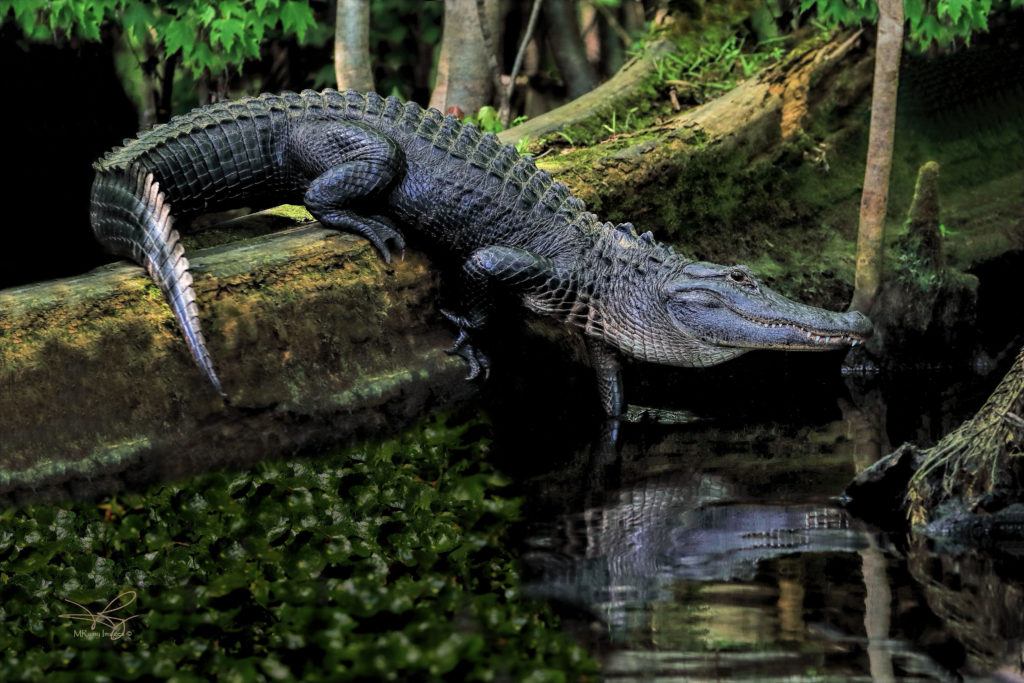About the Okefenokee Swamp
The Okefenokee Swamp, located in southeastern Georgia, USA, is the largest blackwater wetland ecosystem in North America, and the least disturbed freshwater ecosystem on the Atlantic Coastal Plain. It is astoundingly beautiful, with moss-covered cypress trees standing above flowering plants floating on tea-colored blackwaters. Okefenokee is believed to be a Creek Indian word meaning “trembling earth” as some of the “land” in the swamp is really partially buoyant peat deposits that move and shake when walked upon or when the wind blows on the vegetation and trees. The swamp covers approximately 165,000 hectares or about 640 square miles.
The swamp isn’t all wet. There are numerous islands within the swamp, some a few thousand acres in size. Even the wet parts aren’t always wet. The swamp is susceptible to drought, when water levels can drop significantly. There are 21 habitat types within the swamp, and this diversity of habitat types contributes to high biodiversity with more than 850 plant species and more than 200 bird species that live within or use the swamp. According to the Okefenokee National Wildlife Refuge, animals include 64 reptile, 50 mammal, 39 fish, and 37 amphibian species. In total, more than 400 vertebrate species live within or use the swamp for part of their life history.
A brief history of the Okefenokee Swamp
Most of the swamp, 93%, is protected within the Okefenokee National Wildlife Refuge (ONWR). A National Wildlife Refuge is like a National Park for plants and animals: humans are welcome as visitors, but the management emphasis is on maintaining high quality habitats and conducting ecosystem research. Refuge lands include terrestrial forest lands on the swamp perimeter, and here the Refuge is restoring and managing the native longleaf pine ecosystem.
The refuge is surrounded by commercial forest lands, state forests and blueberry farms, out to a distance of several miles on the east and north and several tens of miles on the west and south.
400,000 visitors enter each year through three access points: Stephen C. Foster State Park, accessed from Fargo, GA, in the southwestern portion of the swamp; the private, non-profit Okefenokee Swamp Park on the northern edge of the swamp; and the Okefenokee National Wildlife Refuge on the eastern side of the swamp near Folkston, GA. Each site has foot trails, including boardwalk trails, and boat access with canoe, kayak, and small motorboat rentals. There are 120 miles of water trails for canoeing and kayaking within the swamp.
The ONWR is the 16th most visited National Wildlife Refuge, and it currently contributes $91.5 million each year to the economies of Ware, Charlton, and Clinch Counties. The Okefenokee Swamp has been nominated as a UNESCO World Heritage Site, and if selected in 2026, the Department of Interior estimates that this designation will double visitation to the swamp.

